Regional News
Common Asian Currency? China Leads Drive for ASIO Dollar
Possibility of ASIO Dollar - The yuan may also become convertible and an international reserve currency by 2016, said most global investors surveyed by Bloomberg earlier this month
EARLIER this month, China beat Japan in a bid to appoint the head of a new organisation that may one day pave the way for a common currency in Asia.
Mr Wei Benhua, the former vice-head of China’s State Administration Of Foreign Exchange, was named the first director of the Asean+3 Macroeconomic Research Office (Amro). This is a Singapore-based regional financial surveillance body that was launched this month.
The news followed a controversial suggestion by Malaysian Deputy Finance Minister Lim Siang Chai that China should take the lead in creating a unified Asian currency – a proposal Beijing has not responded to publicly, but which it likely greeted with quiet pleasure.
With China pushing for a greater role in regional affairs, the prospect of leading one of the most aspirational pan-Asian initiatives – and one once championed by Japan – is attractive.
Already, it is China’s currency regime moves that are most closely followed by its Asian neighbours, since the yuan is certain to feature prominently in an Asian monetary unit.
China is thus asserting its voice on the Asean+3 platform, which comprises Asean as well as Japan, China and South Korea.
Its leadership rivalry with Japan was a talking point at a meeting of Asean+3 finance ministers in Hanoi two weeks ago, where China got its way in grabbing the plum appointment at Amro.
One gauge of how seriously Asian officials, especially the Chinese, consider the idea of a regional monetary unit is a recent paper prepared by a high-level group for the Asean+3 Research Group. Its recommendations were tabled at the Asian finance ministers’ Hanoi meeting.
It included a survey of about 1,000 government officials, academics and bankers in the Asean+3 countries on implementing a regional currency unit.
Dr Pradumna Bickram Rana from the Nanyang Technological University, who led the team doing the survey, said there was overwhelming backing for the creation of a regional currency unit to support regional surveillance in the Asean+3 group, although a single currency for the region is still a long way off.
Those surveyed said the regional currency unit should comprise a basket of Asian currencies – with the Chinese yuan and Japanese yen having the highest and equal weights. The weighting should be based on the proportionate contributions made by Asean+3 members to the Chiang Mai Initiative Multilateralisation (CMIM), which is a US$120 billion (S$149 billion) crisis fund established in the region.
Japan and China (together with Hong Kong) had each agreed to contribute 32 per cent of this amount. South Korea contributed 16 per cent and the Asean countries, the remaining 20 per cent.
Amro, as the surveillance unit of the CMIM, was also recommended as the agency best positioned to administer this currency, which would include calculating the value of this regional monetary unit and posting it on its website.
The Chinese are likely to be gratified by the findings. The recommended high weighting of the yuan reflects the growing recognition of China’s economic clout and its currency’s importance.
Just two years ago, Japan had presented itself as a leader in this decade-old idea of a common currency, before the global financial crisis diverted attention from it. Now, China has overtaken Japan as the world’s second-largest economy.
China has led the Asian pack out of the financial slump, and is moving quickly to regionalise its currency in Asia. This has included setting up clearing banks in Hong Kong and Singapore to support trade settlement and investment products denominated in yuan.
The yuan may also become convertible and an international reserve currency by 2016, said most global investors surveyed by Bloomberg earlier this month.
Burgeoning intra-regional trade has helped narrow economic gaps between Asian countries. Once-huge barriers to creating a common currency, from political differences to economic diversity, appear less daunting.
While the regional monetary unit will take some time to take off, China’s participation will give it a good start.
Dr Chow Hwee Kwan, associate dean of the School of Economics at Singapore Management University, pointed out that ‘since the yuan is a key component of the regional monetary unit, the success of its implementation does depend on China’s support’.
But even if China has the interest, is it ready to lead such a complex initiative?
Some scholars in China, such as Mr Tong Shijun, who heads the Federation of Commerce in Henan province, believes China ‘has the resources and the credibility’ to take the lead.
But others say Beijing has to allay its neighbours’ suspicions about its growing dominance in Asia.
China and Japan will also have to work out a balance of power in Asia first, starting with the top seat at Amro: Mr Wei will occupy the post for only a year before a Japanese finance official takes over.
But even if China only takes turns at the driver’s seat, the journey to achieving a common Asian currency, once little more than a pipe dream, looks set to begin in earnest.
Despite the creation of “offshore Asian dollar market,” Today is still in the conceptual stage, but many scholars have been recognized and supported. As the first that “offshore Asian dollar market,” the concept of scholars, vice president of Sun Lijian of Economics, Fudan University said: “This is a fully digest the stock of dollar reserves, in order to provide valuable experience in the internationalization of RMB step . “Sun Lijian in 2008 proposed the establishment of” offshore Asian dollar market “concept.
50s of last century offshore Eurodollar market in London has begun to take shape, and in 1968, Singapore also had the Asian dollar market. In this regard, Sun Lijian said he envisioned a more complete multi-level products offshore Asian dollar market. “The need for China to do, the only way to master the self-dollar wealth management initiative.”
China can fully benefit
The world not only in Asia such demand, why not through the offshore Asian dollar U.S. debt market to unite all countries.
“21 century”: In your opinion, offshore Asian dollar market is mainly a kind of concept?
Sun Lijian: offshore Asian dollar market mainly refers to the major Asian countries to strengthen financial cooperation, a step on the road. Dollars to carry out offshore operations in Asia, through a certain regulatory approach and the establishment of regional financial cooperation model that allows enterprises to issue U.S. dollar denominated securities, and Asian manufacturing companies and sovereign wealth funds can buy these from the United States need freedom government control of financial products and services, improve the operational efficiency of U.S. dollar assets.
“21 century”: the first time you mention the idea of ??Asian dollar offshore market in 2008. Why was mentioned? Now and then the macro environment has changed compared to it?
- Sun LiJian, was born in Shanghai in 1962. He earned his Ph.D. in business from Hitotsubashi University. Today he serves as executive and vice president at Stock Research of economic institute of Fudan University, and is associate professor of economic institute of Fudan University.
Sun Lijian: I first proposed in 2008 the offshore market, Asian dollar concept, and it is related to the macroeconomic situation at the time. At that time the financial crisis is significant, the introduction of quantitative easing policy of the Fed, the dollar value of seeing the shrink. Dollar foreign exchange reserves, China’s main investment channels was still no sign of holdings of U.S. Treasuries, holding high price to buy but the yield has remained at the bottom of U.S. Treasury bonds, it is not a cost-effective investment.
Countries in Asia and China have similar problems, which is the major Asian countries to discuss the basis of financial cooperation, but also the focal point of cooperation.
The fundamental problem now facing and did not change, but there is a new phenomenon is that more and more Chinese people begin to look at the focus on the internationalization of the RMB, but did not realize the internationalization of RMB is a distant goal, China’s capacity is currently very limited, can not step in success.
We must realize that the world Liucheng global trade is still denominated in U.S. dollars, do not mature if the internationalization of the RMB, it will bring bubble. My advice is, through the construction of the offshore dollar market and develop for the future internationalization of the RMB to provide a good infrastructure and platform, which is a more realistic step.
“21 century”: Why promote offshore Asian dollar market? For China, it can fully benefit from? Other countries in Asia What are the benefits?
Sun Lijian: Because we always deal with this change in the scale of the attitude of huge foreign exchange reserves – the establishment of offshore Asian dollar market, foreign exchange reserves is not aimed at crisis prevention, but a wealth management.
First of all, we can offshore Asian dollar market to create and manage their U.S. dollar wealth. Although Asian countries have been making their way through a variety of diverse foreign exchange reserves, but an indisputable fact that the Asian dollar reserves still account for about 600 billion to insure that the seven reserves. If we can change
One way to invest in U.S. treasury bonds, and then purchase a variety of more representative of the Asian economic growth in fixed income or equity products, then the Asian countries to achieve self-management of wealth for the dollar.
Second, think globally, not only is there such a demand in Asia, and even the Middle East oil-rich countries also have such needs. Why not offshore Asian dollar market by uniting all the U.S. national debt?
In addition, an unavoidable problem is that high-tech areas in the United States for China’s overseas investment, the United States still maintained a high degree of caution, the Chinese capital is difficult to direct investment by U.S. dollars. The offshore market is the opportunity to create investment products, making China the opportunity to share these large U.S. high-tech industry’s growth.
More practical idea of ??more operational
Good growth through vigorous development of the “Asian dollar investment products”, entirely outside the United States to create a virtuous cycle of offshore markets.
“21 century”: the Asian financial cooperation issues discussed for many years, from Chiang Mai to the later Asian Monetary Fund (AMF) idea, various cooperation frameworks or products presented one by one. Now present the construction of China’s own offshore Asian dollar market, the idea, and what is envisaged in the agreement or the similarities and differences?
Sun Lijian: Historically, the Asian financial cooperation under the framework of these products are not initiated by the Chinese. Whether the currency swap agreement that year, or later in Japan’s “Asian dollar” idea, for China can not fully benefit. Offshore Asian dollar market, through the full capabilities that help digest the stock of dollar reserves in Asia, in fact, these ideas than to come before the more practical, up and running faster.
Existing offshore Asian dollar market – for historical reasons, Singapore developed relatively stable, but its function is still relatively simple: that the majority of cases, the offshore market is still playing the role of the dollar pool of funds, through the various types of funds and products brought together the funds, is still invested in the U.S. onshore market, various types of products.

Regional News
Thai Immigration Police Detain Over 26,000 Illegal Migrant Workers
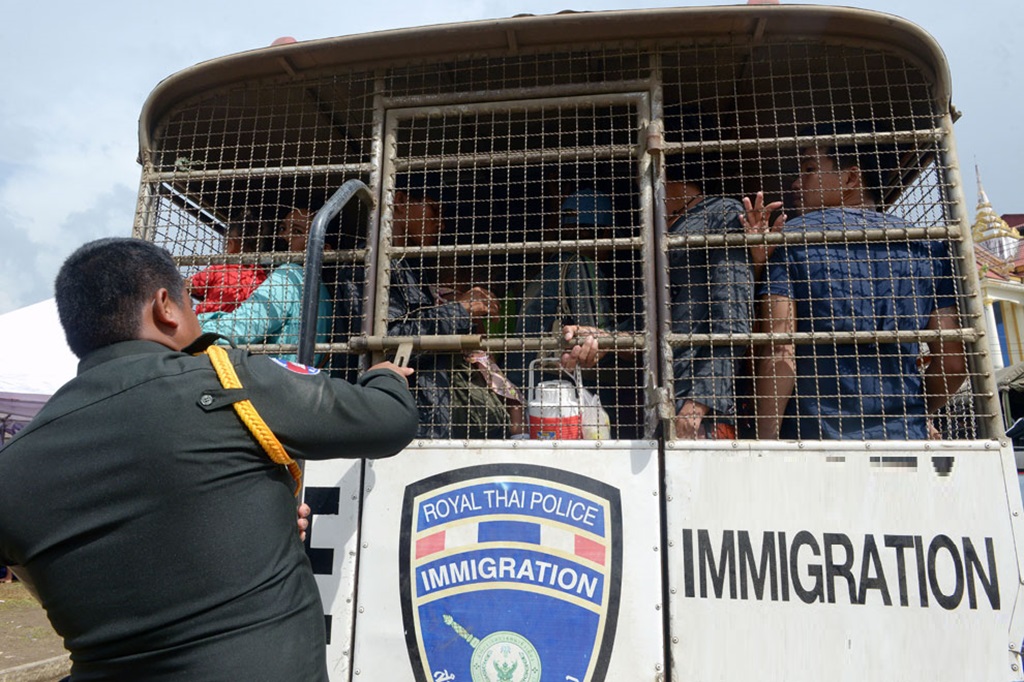
Thailand’s Immigration Police have detained approximately 26,000 illegal migrant workers from Laos, Myanmar, and Cambodia during an eight-day operation in Bangkok and surrounding regions, according to a Royal Thai Police spokesperson.
Mr Adisorn Keudmeuangkhon of the Bangkok-based Migrant Working Group said the drive was in response to an increasing number of concerns about an influx of illegal migrant labor.
“Some Thai people see that many illegal workers are competing for their job positions in the past few months,” he told me. “That’s why the ministry has to take tougher action.”
Civil strife in Myanmar and the recent implementation of a military conscription have driven thousands of Burmese into Thailand, while severe inflation and limited job opportunities in Laos have also encouraged an influx of workers from that country.
Between June 5 and 12, officials detained and checked 20,111 Myanmar laborers, 1,659 Laotian migrant workers, and 3,971 Cambodian workers, according to the Ministry of Labor.
It marked the start of a 120-day campaign to audit workplaces and arrest unlawful migrant workers, according to the government.
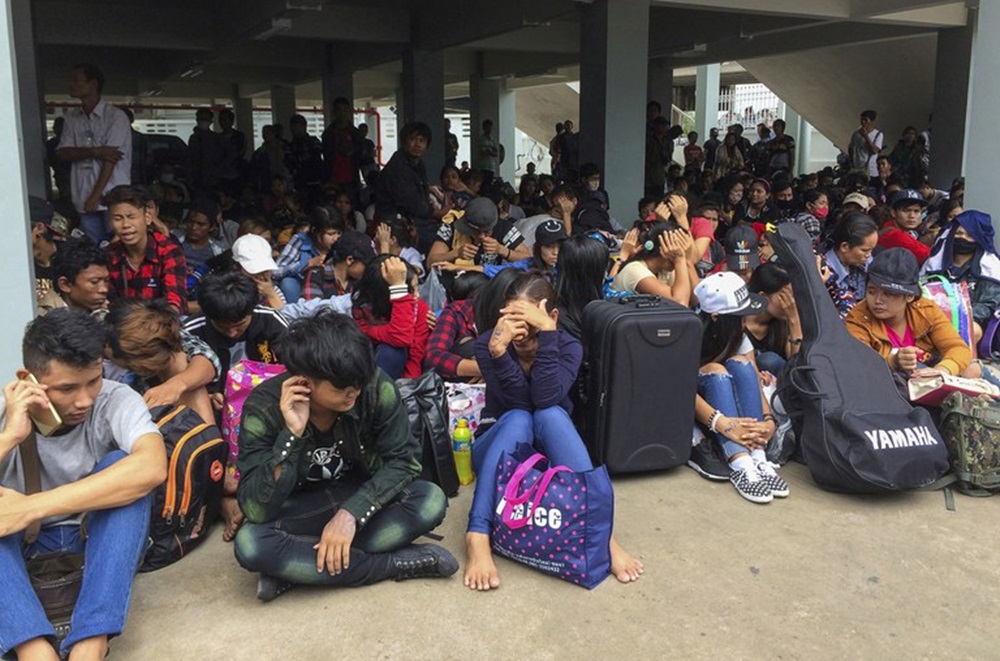
Migrant Workers to be Deported
According to Keudmeuangkhon, undocumented workers face fines ranging from 5,000 to 50,000 Thai baht (US $136 to $1,365), deportation, and a two-year prohibition on re-entering Thailand.
Authorities did not intend to file criminal charges, he claimed.
Authorities raided 1,774 workplaces, according to Moe Gyo, chairman of the Joint Action Committee on Burmese Affairs, which advocates for Myanmar labor rights.
He stated that since the military junta activated conscription, there has been an upsurge in the number of arrests of Myanmar citizens in Thailand who do not have a work permit identity card.
All men aged 18 to 35 and women aged 18 to 27 must serve in the military for at least two years. The first group of 5,000 conscripts summoned by Myanmar’s junta will start duty at the end of this month, military sources told AFP on Monday.
According to Keudmeuangkhon, the bulk of Lao migrant workers in Thailand work as fresh market shopkeepers, restaurant servers, and mall salespeople.
Most people visit Thailand as part of ASEAN’s visa-free policy for tourists, but they stay longer than the 30-day restriction once they find job.
“Employers like to hire Lao migrant workers in the service sector because they can speak fluent Thai,” he told me.
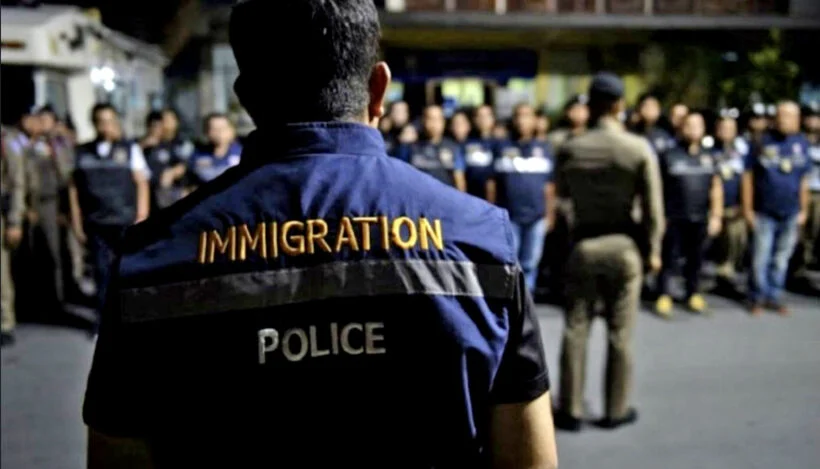
Immigration Police Detain Illegal Migrant Workers
The Thai Cabinet may approve an enhanced program for Thai employers to register their unauthorized foreign workers in July or August. Keudmeuangkhon explained.
Last month, the Thai Ministry of Labor’s Foreign Workers Administration office announced that 268,465 Lao migrant workers were officially working in Thailand.
Baykham Kattiya, Lao Minister of Labor, told Radio Free Asia earlier this month that there are 415,956 migrant workers in other nations, the majority of whom work in Thailand.
According to her, the Lao government believes that over 203,000 persons working outside of the nation lack proper work documents.
However, a Lao official familiar with the labor industry informed Radio Free Asia, a BenarNews-affiliated news station, on June 20 that the number of illegal Lao migrant workers in Thailand and abroad is likely significantly greater.
“They go to other countries as illegal migrant workers through different types of methods – as tourists or students,” said the politician. “Thus, it is hard for the immigration police to collect data on these people.”
Government Officials Responsible for Smuggling in Migrant Workers
Government Officials Responsible for Smuggling in Migrant Workers
News
High School Student Dies After Being Electrocuted By School Water Dispenser
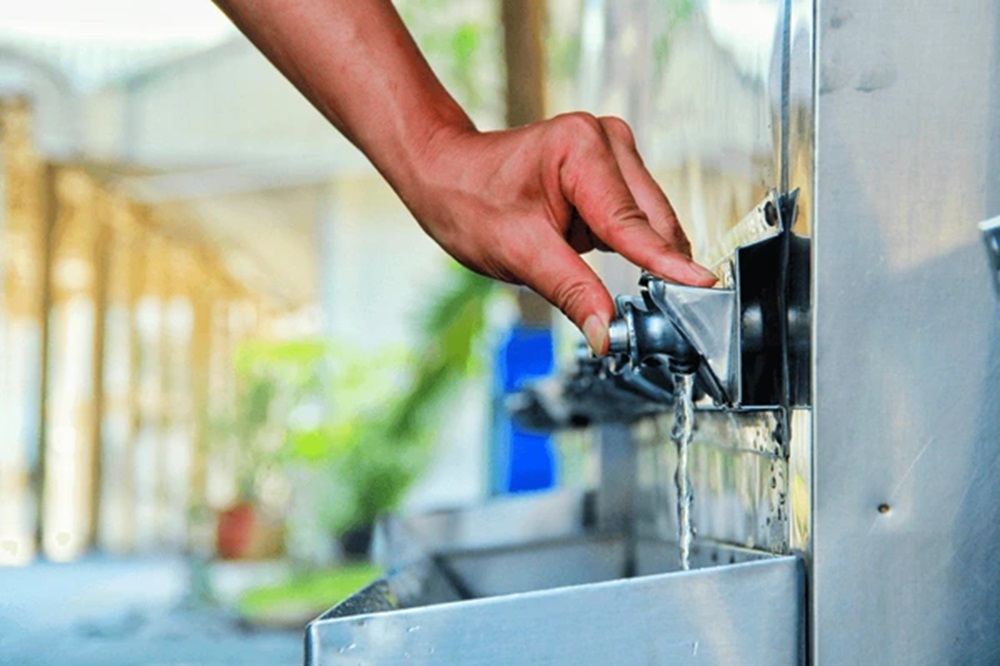
Thailand’s Office of Basic Education Commission has initiated an investigation into the electrocution of a 14-year-old student by a water dispenser in a high school. The event happened at noon on Friday, during the high school’s sports day. The victim was a Grade 8 student.
According to local media in Trang Province, the incident occurred when a teacher instructed the pupil to turn off a water dispenser amid a heavy rain.
According to a witness, the child collapsed while strolling with his friend near a water station. The friend claimed he attempted to assist but was also shocked by electricity.
According to reports, the friend then recovered, left the site, and requested assistance from teachers. A teacher ran to the scene and used a towel to pull the boy away by the ankle. He was taken to the hospital, but it was too late, they claimed.
The event sparked criticism from parents and netizens over school safety, as well as the slow response to aid the young youngster.
Mr. Chainarong Changrua, head of Trang-Krabi’s Secondary Educational Service Area Office, told local media on Sunday that forensic officers from Trang Provincial Police had visited the area. They discovered the blown breaker switch behind the water dispenser, he explained.
The breaker was burned out, thus the authorities assumed the disaster was caused by a short circuit that allowed energy to spill to a neighboring power pole. The student also appeared wet and was not wearing shoes when electrocuted.
According to the Office of Basic Education Commission, a probe team will complete its investigation this week.
The student’s father, Mr Pornchai Thepsuwan, 53, claimed he was saddened when he saw his son’s body. The boy (Wayu), was the youngest of two boys, he explained. He stated that following the tragedy, the school director and staff gave financial assistance to the families.
Mr Pornchai also said he would not seek charges against the institution because he believed it was an accident.
Electrical accidents in Thailand
Electrocution instances in Thailand have increased alarmingly in recent years. Many mishaps occur as a result of improper wiring and inadequate maintenance of electrical systems.
Public locations, such as schools and markets, frequently lack adequate safety precautions, putting individuals in danger. In rural areas, antiquated infrastructure exacerbates the situation, resulting in more frequent and serious events.
Although several high-profile cases have brought these challenges to light, genuine progress has been gradual. Furthermore, the rainy season heightens the likelihood of electrical accidents, as water and exposed wires do not mix well.
The government has made steps to strengthen safety standards, but enforcement is patchy. More education on electrical safety could help to reduce these accidents.
Unfortunately, better infrastructure and tougher rules may have prevented many of these incidents. The loss and injuries caused by electrocution are avoidable, emphasizing the need for immediate action.
Over 200 High School Students Facing Sedition Charges in Thailand
Over 200 High School Students Facing Sedition Charges in Thailand
News
Thailand’s Tourist Police Crackdown on Tourist Scammers in Pattaya
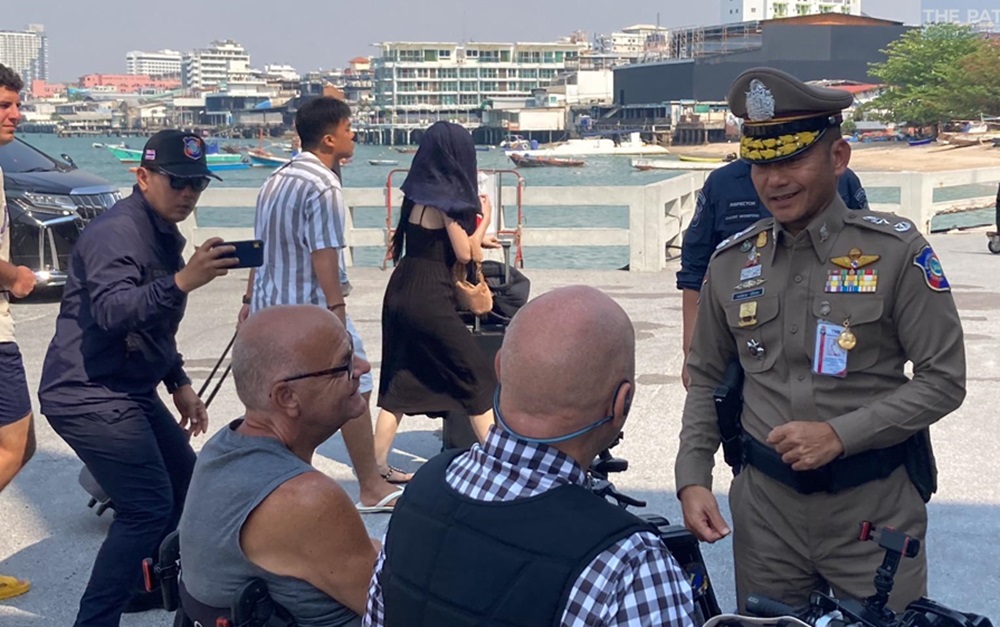
Thailand’s Tourist Police said it is collaborating with embassies from five countries to combat tourist scams and ten criminal gangs in Pattaya. The Tourist Police Bureau, convened a meeting on Thursday Pol Lt Gen Saksira Phuek-am told a press briefing.
Pol Lt Gen Saksira Phuek-am, the Tourist Police bureau commissioner said the participants included ambassadors from South Korea, Ukraine, Russia, India, and Switzerland.
He told the briefing the he had ordered a crackdown on tourist frauds, such as fraudulent or low-quality tour operators and unfair sales of goods and services. Stepped-up operations began on June 19 and will continue until June 25.
He stated that the agency was working with numerous organisations to increase tourists’ confidence in visiting Pattaya.
Gen Saksira spent time on the famed Walking Street speaking with officers on duty and assigned them to seek for members of ten criminal groups known to operate in Pattaya.
Meanwhile, Prime Minister Srettha Thavisin will visit Chon Buri on Saturday to assess the tourism situation. He intends to visit the site of a future Formula One racecourse near Khao Phra Tamnak in Bang Lamung District.
Prime Minister Srettha recently met with Formula One organisers in Italy to examine the potential of including Thailand on the race schedule in the future.
On Sunday, the Prime Minister will pay a visit to Rayong’s U-tapao airport to discuss development on the airport’s land, with the goal of encouraging investment in the Eastern Economic Corridor.
Police Chief Reinstated
In other police news, Pol Gen Torsak Sukvimol has been reinstated as national police chief following the conclusion of an investigation into a highly publicised quarrel, according to Wissanu Krea-ngam, Prime Minister Srettha Thavisin’s counsellor.
Mr Wissanu released the investigation’s findings on Thursday, after the prime minister formed a fact-finding committee chaired by Chatchai Promlert to investigate into the quarrel between Pol Gen Torsak and his deputy, Pol Gen Surachate Hakparn.
The four-month study revealed conflicts and disorder at all levels of the Royal Thai Police, but it was unclear whether these issues arose from a single cause or several causes, according to Mr Wissanu.
The findings revealed that both Pol Gen Torsak and Pol Gen Surachate were involved, with each team contributing to the tensions, he noted.
Mr Wissanu indicated that Pol Gen Surachate was reinstated as deputy national police head on 18 April following his relocation to the Prime Minister’s Office on 20 March. A disciplinary committee was formed to investigate Pol Gen Surachate, and he was ordered temporarily suspended from the police force.
Because there were no further difficulties to explore, it was decided to restore Pol Gen Torsak. He plans to retire on September 30.
On March 20, Mr Srettha abruptly transferred both top police officers to the Prime Minister’s Office in an effort to address the growing schism within the police service.
Kitrat Panphet, Deputy National Police Chief, was subsequently named Acting Police Chief. According to sources, Pol Gen Surachate could face money laundering charges related to online gaming networks.
Source: Bangkok Post
-

 News4 years ago
News4 years agoLet’s Know About Ultra High Net Worth Individual
-
Entertainment2 years ago
Mabelle Prior: The Voice of Hope, Resilience, and Diversity Inspiring Generations
-
News11 years ago
Enviromental Groups Tell Mekong Leaders Lao Dam Evaluation Process Flawed
-

 Health4 years ago
Health4 years agoHow Much Ivermectin Should You Take?
-

 Tech3 years ago
Tech3 years agoTop Forex Brokers of 2023: Reviews and Analysis for Successful Trading
-

 Lifestyles3 years ago
Lifestyles3 years agoAries Soulmate Signs
-

 Entertainment3 years ago
Entertainment3 years agoWhat Should I Do If Disney Plus Keeps Logging Me Out of TV?
-

 Health3 years ago
Health3 years agoCan I Buy Ivermectin Without A Prescription in the USA?